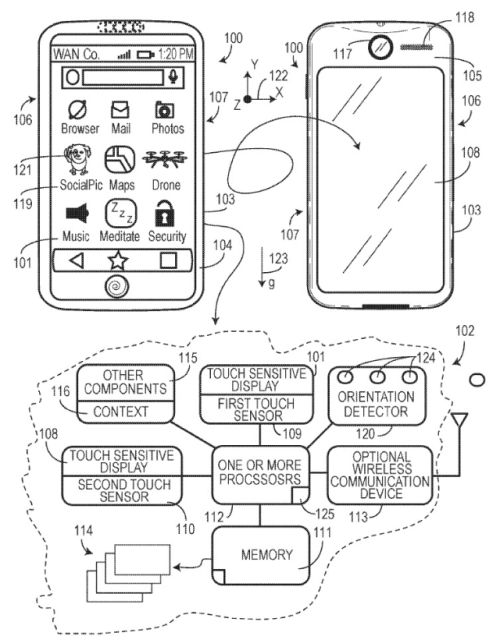The UKIPO has issued a decision on a patent application (by Motorola) regarding the patent-eligibility of a dual-screen mobile device. Simply put, the device has two touch-sensitive displays – on opposing surfaces i.e. its front and back – and the user may switch from displaying content from one display to the other by activating a touch sensor on the latter screen, according to the claimed embodiment in question.
Patent applications related to screens and GUIs (graphic user interfaces) often run into trouble at the UKIPO (and other IP offices internationally) because of a statutory exclusion from patentability of ways of presenting information and computer programs, among others.
Such exclusion only applies, however, if the subject-matter relates to presenting information, computer programs, etc. "as such", that is the claimed subject-matter does not involve an actual technical contribution in some other way.
For some cases the subject-matter runs so clearly foul of the exclusion it is bound to fail, no matter what angle the Applicant tries to take. In this case, however, it is somewhat surprising to us that the point needed a UKIPO hearing to resolve: interactions between a human user, processor(s), and two display hardware components with an on-off correlation, very arguably result in a more sophisticated technical arrangement than merely making a display display a thing.
The first-instance Examiner considered the hardware to be a conventional arrangement of a touch screen device with dual screens, citing multiple prior art. He and the Applicant differed on what the contribution was and thus whether it was technical.
When the case reached the Hearing Officer, analysis was carried out using the now-standard (in the UK) Aerotel test for excluded subject-matter, and the five AT&T signposts on technical contributions of computer programs. He concluded that the third and fifth signposts were met, as the device operates in a technically new way, and the problem of improving user interaction with the dual-screen device is actually overcome rather than circumvented. The invention thus goes beyond being simply a program for a computer.
Furthermore, what the invention does is not limited to the particular type of information displayed, but rather to the mechanism by which the information is switched between two distinct touch displays through interaction with the user. This is, indeed, beyond mere presentation of information.
The Hearing Office decided accordingly to remit the case for further assessment of its novelty and inventive step.

[Figure: Fig. 1 of GB2599763A (Motorola's application)]
The content of this article is intended to provide a general guide to the subject matter. Specialist advice should be sought about your specific circumstances.


